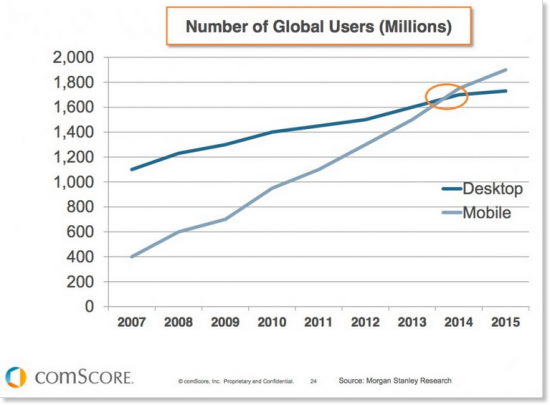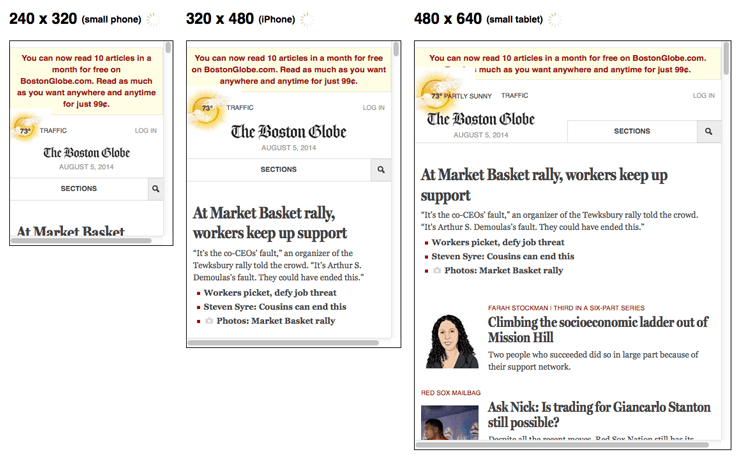by admin | February 1, 2017 | Industry Trends
Stakeholders are a necessary component of nearly every content project. Without their unique perspectives, even the most talented writers and strategists would fall short of creating the best, most customized product possible.
As a result, they are incredibly important and impactful players– and not only because of their unmatched expertise and invaluable feedback. Stakeholders have the ability to:
- Delay or halt projects
- Change direction or process
- Impact budget or scope
- Approve the final product or …
- Send everything back to the drawing board
You can’t live them, and you can’t live without them. That’s why all marketers should follow this advice: When it comes to stakeholders, handle with care.
Common Stakeholder Problems
Whether you are a client working with internal stakeholders or a marketer who regularly manages them, the challenges are the same. You may have encountered setbacks or challenges from any of these common personalities:
The Break Pad: These stakeholders have jam-packed schedules and may be repeat “no-shows” for interviews. They sit on content for weeks past deadline, holding the review process hostage. It’s a common situation because the most valuable stakeholders often hold very senior positions and are legitimately busy.
The Charlie Brown: Everybody on the project wants these people to weigh in, but they do not understand their value. Interviews are challenging because they don’t provide clear, direct answers or often defer to other people, who may or may not be stakeholders. As a result, their feedback is light on the key details you need.
The Expert: While all stakeholders are experts in their areas, this stakeholder is also an expert in your job – whether it’s writing content, developing an SEO strategy or designing a webpage. It may be hard to convince this stakeholder of well-accepted industry best practices if he or she disagrees. Prepare for intense edits and feedback.
The Monday Morning Quarterback: The no. 1 reason for project delays? Either the Charlie Brown or The Expert can morph into this stakeholder in the final stages. They see the first draft and disagree with its direction, possibly even contradicting their own input. Be aware: It’s very common for stakeholders to change their mind or be surprised when they see their words spun into something more tangible like a webpage or blog.
Best Practices for Managing Stakeholder Relationships
The best way to work with stakeholders is a very proactive approach. We have compiled our best practices for interviewing and managing stakeholders to help avoid those frustrating project delays and setbacks:
Establish a clear process from Day 1: Put yourself in the uninformed stakeholder’s shoes: They do an interview with you or your team, you disappear for weeks, then re-emerge with a sudden need for feedback and approval at a time that may not be convenient. You would be annoyed, too, right? Take a few minutes during your stakeholder call to walk them through the process, timeline and what you will need from them so they are prepared.
Don’t be afraid to over-prepare: If you want to get the most out of your stakeholder interview, do not show up as a blank slate. Do your homework by researching as much as you can about the subject matter, client, competitors and even the stakeholder ahead of the interview. Asking basic questions is the best way to waste an interview. Instead, use your time to delve deeper and get into messaging, differentiators and help with more complex topics.
Communicate key dates and repeat, repeat, repeat: Stakeholders are very busy. They will quickly scan your email, so make it easy for them: Clearly state your time frame in bold font. At your interview, remind them at the start and end when they will receive a draft for review. Follow up with an email reminding them of this date and how much time they will have for feedback. Send reminders ahead of the deadline.
Avoid sending a list of questions in advance: It may sound counterintuitive. But if you want the most out of your discussion, don’t fence yourself in with a script. When given a list of questions, stakeholders tend to offer stiff, careful answers. You miss out on the rich details that a more organic conversation can uncover. Instead, provide an overview of topics and write a few short sentences describing your goals for the interview.
Control the review process: Lay the groundwork for a clear review process before scheduling the first stakeholder call. If you are working with multiple stakeholders, it’s a good idea to establish the following:
- Which stakeholders need to review/approve the final product, and whether anyone’s feedback is more authoritative or should be last
- How many rounds of revisions are included within project scope
- Whether stakeholders are editing for content, accuracy, messaging, or all of the above
- A process for ensuring consolidated feedback so you don’t get back conflicting feedback and direction
- A clear timeline and how feedback delays will affect project completion
Interested in learning more about content marketing? Check out Charles River Interactive’s blog View from the Charles:
7 Email Marketing Best Practices
How to Write Strategic Calls to Action
5 Tips for Writing for Mobile
by admin | March 27, 2015 | Industry Trends, Paid Search, Uncategorized
Why Do You Need a Mobile Website?
With technology constantly growing and advancing, the average website now receives approximately 60% of its traffic from a mobile device.[1] Google reports that 94% of people with smartphones search for local information on their phones and 77% of mobile searches occur at home or work, places where desktop computers are most likely to be present. In 2014, the number of mobile users surpassed the number of those using a desktop. These statistics confirm the growing popularity and need for a company’s mobile presence online, including the need for a well-constructed mobile website.

Updates to Mobile Search
In April 2015, Google will introduce mobile-friendliness as part of their search algorithm. This update will put emphasis on sites designed for mobile search and give priority to these pages in search results.
Google has also made a number of display updates for mobile search results, including separating results with a colored line
and app indexing, where users will be served a link to a previously downloaded app if appropriate. Google now labels mobile friendly websites directly within search results. Having this label may help increase click through rates, as users know a mobile friendly website is more likely to load quicker and will be easier to navigate on their device. You may also see the word “slow” next to websites with long page load times.
Google also has available a Mobile Usability report within Webmaster Tools and a PageSpeed Insights tool for mobile sites. This is a great start for understanding where your website currently stands in terms of mobile usability.
What is a Mobile Website?
The most common type of mobile website uses a “responsive design.” A responsive design website is a single website coded to “respond” to the device of a user. With this design, the website can adapt by changing the width of columns, text size, button spacing, etc. to offer optimal mobile viewing for the user.

Another type of mobile website is the “M.” site (m.site.com), which creates a separate mobile website. These sites are becoming less popular as they often provide a poor user experience and require much more coding to maintain. Mobile-only pages also need to build up their own reputation (content, links, etc.) because they do not receive shared indexing signals from an existing desktop version of the page.
[1] http://smallbiztrends.com/2014/07/online-traffic-report-mobile.html
by admin | June 27, 2014 | Local SEO, Paid Search, Search Engine Marketing, SEO, Uncategorized
Since its launch in 2011, there has been reluctance among many marketers and non-marketers to embrace Google+ as a preferred social platform. Any mention of Google+ is usually met with an eye roll and the common (often-rhetorical) question: ‘Who even uses Google+?’ What has been lost on some, however, has become an advantage for others, considering the Google-owned social network functions hand-in-hand with local search and organic search display.
You can find local search influence in the Google Carousel, Google Maps, and on mobile devices – all three pull from Google+ and local search.
Google+ commands 300 million users and influences 43% of all Google searches with local query intent. Since the early years of Google’s social network, there have been several updates to increase ease of use. Previously known as Google Places, which became Google+ Local, the platform evolved last week to become Google My Business. The recent launch of Google My Business has changed the way we utilize Google products through the successful integration of social, search, and maps, all of which provide a better experience for customers worldwide (Google My Business is available in 236 countries and 65 languages).
Two of the most important updates in Google+ evolution are the improved user experience and cleaner dashboard operating system, as Local SEO experts have been bemoaning both for years. Google took notice and delivered a strong solution with Google My Business.
Google My Business Updates – in plain English
(more…)

by admin | April 14, 2014 | Search Engine Marketing, Uncategorized
Charles River Interactive of Lexington Moves to Accommodate Rapid Growth
Lexington, MA, April 1, 2014
Mark Desrochers of Westford, MA, president and founder of Charles River Interactive, announces the move of Charles River Interactive corporate offices from Lexington, MA to double the quarters at 890 Winter St. in Waltham. Charles River Interactive will move operations to the new facility in Waltham, MA to accommodate an employee count that has doubled over the last 18 months. The new office increases individual work space to improve efficiency, provides multiple conference rooms to host a large regional customer-base, and allows for future employee growth.
Charles River Interactive is a digital marketing agency specializing in search marketing and web analytics. “Our customer-base has grown significantly over the last few years and we’ve enjoyed the ability to hire key internet marketing talent,” states Desrochers. “This new space is not only a step up in square footage for us, but it’s also a significant step up in quality of space including not only the work environment but also amenities for our employees. Internet marketing, including search engine optimization and pay per click are recognized as integral pieces of company’s marketing budgets and strategies,” says Desrochers, “we expect continued robust growth.”
About Charles River Interactive
Charles River Interactive helps clients meet their varied business goals through cutting-edge search engine marketing (SEM) and social media strategies. CRI is made up of industry-leading organic search, paid search and web analytics experts, as well as experienced project and account managers. CRI takes a highly consultative approach to developing holistic SEM strategies that are backed by data and designed to meet clearly identifiable business goals. Account teams work closely with clients to educate website stakeholders on the key components of search and we strive to integrate search marketing principles throughout each aspect of a client’s overall marketing strategy.
by admin | January 29, 2014 | Analytics, Uncategorized
Sampling in Google Analytics occurs when the program takes a subset of data from your website traffic and reports on trends available in that sample set. Website owners and marketers rely on this data to see how well their website is performing, and to analyze any changes that may have happened to the website.
How is Google Analytics Data Sampled?
When you look at a Standard Report, you will see unsampled data. Meaning, if you look at “All Traffic” during any given period of time, you will see the correct numbers as reported by Google. However, once you add a filter, custom report, or segment to this data (organic traffic, blog traffic, pages with more than 1,000 visits, etc.) your data becomes sampled. You will know your data is sampled when you see the yellow box in the upper right hand side by the date.

By default, this sample number is set by Google at 250,000 visits (not pageviews). However, Google does allow you to adjust this number up to 500,000. If you have a large amount of data, keep in mind this can really slow down the processing time.
(more…)




